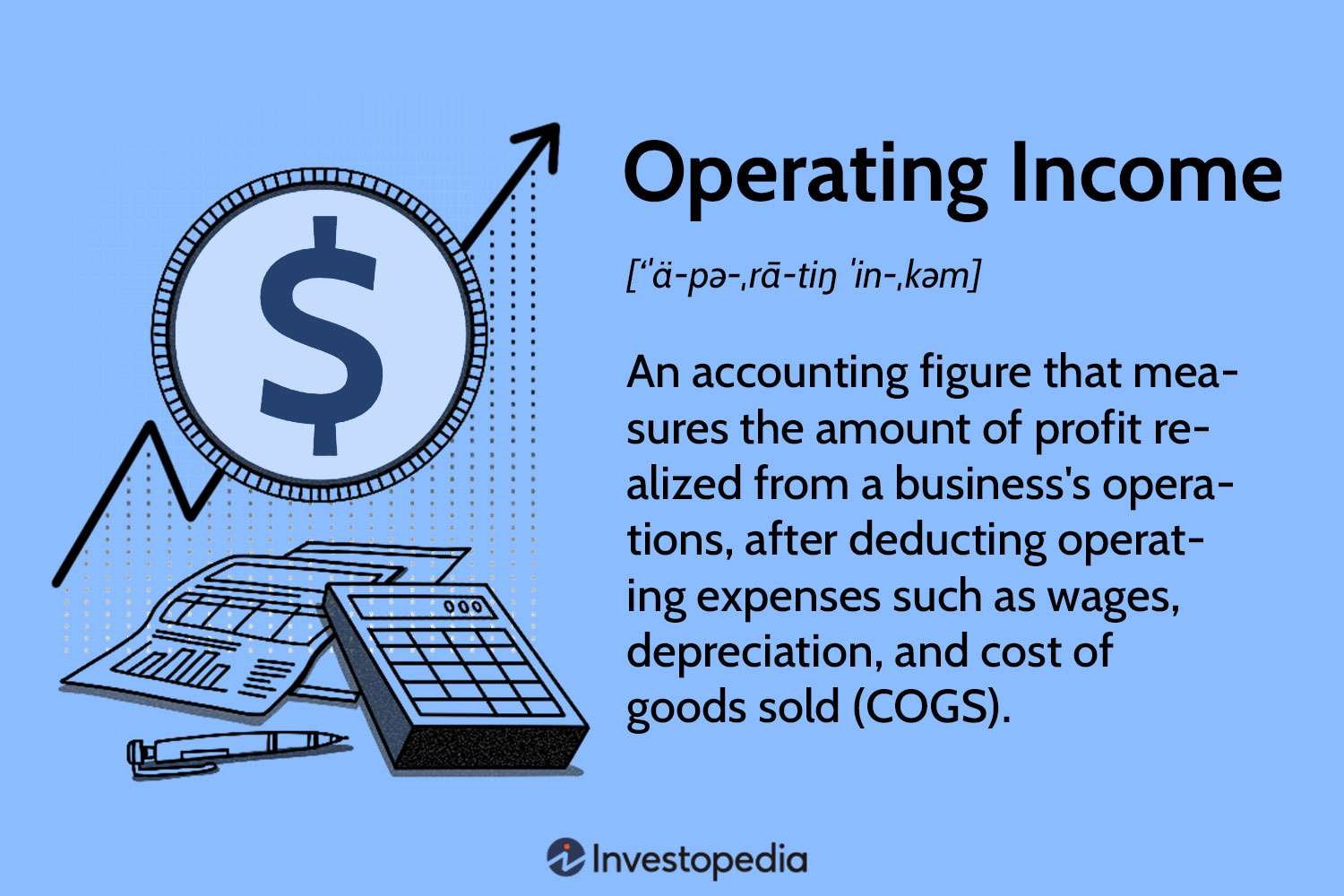Operating income is a crucial metric when it comes to understanding the financial health of businesses. But what exactly does it entail, and why is it important? In simple terms, operating income refers to the revenue generated by a company through its core operations, minus the expenses directly associated with those operations. By delving into this concept, we can gain valuable insights into a company’s profitability and efficiency. In this article, we will explore the ins and outs of understanding operating income in businesses, helping you make sense of this essential aspect of financial analysis. So, let’s dive in and demystify operating income together!
Understanding Operating Income in Businesses
Operating income is a financial metric that provides valuable insights into a company’s financial performance and profitability. It measures the earnings generated from a company’s core operations, excluding any non-operating expenses or revenue. As a key component of a company’s income statement, understanding operating income is crucial for business owners, investors, and stakeholders to assess the company’s profitability and make informed decisions. In this article, we will delve into the intricacies of operating income, its calculation, importance, and how it can be used to evaluate a company’s financial health.
The Basics of Operating Income
Operating income, also referred to as operating profit or operating earnings, is a financial metric that assesses the profitability of a company’s core operations. It represents the revenue generated after deducting all operating expenses directly associated with the production or delivery of goods and services. By focusing on operational efficiency, operating income provides a clearer picture of a company’s ability to generate profits from its primary activities.
Calculating Operating Income
To calculate operating income, you need to subtract all operating expenses from the company’s gross profit. Here’s the formula:
Operating Income = Gross Profit – Operating Expenses
Gross profit is the revenue remaining after deducting the cost of goods sold (COGS). Operating expenses include various costs, such as employee salaries, rent, utilities, marketing expenses, research and development costs, and any other expenses directly related to the day-to-day operations of the business.
It’s important to note that operating income does not consider non-operating income or expenses, such as interest expense, interest income, taxes, or any gains or losses from investments. By excluding these items, operating income provides a clearer view of a company’s operational performance.
The Importance of Operating Income
Operating income is a critical metric for assessing a company’s profitability and operational efficiency. Here are a few reasons why understanding operating income is crucial:
- Evaluating Profitability: Operating income helps determine whether a company’s core operations are generating sufficient profits. It enables business owners and investors to assess the financial viability of the company and compare it against industry benchmarks.
- Identifying Efficiency: By focusing on operational expenses, operating income highlights a company’s efficiency in managing its resources. It allows businesses to identify areas where they can reduce costs and improve profitability.
- Predicting Cash Flow: Positive operating income indicates that a company’s core operations are generating cash. This cash flow can be used to fund growth initiatives, repay debts, or distribute dividends to shareholders.
- Assessing Stability: Operating income provides insights into a company’s ability to withstand economic downturns or industry-specific challenges. A consistent and positive operating income demonstrates stability and resilience in the face of adversity.
Using Operating Income to Evaluate Financial Health
Operating income is a powerful tool for evaluating a company’s financial health. By examining key financial ratios derived from operating income, stakeholders can gain a deeper understanding of the company’s performance and make informed decisions. Here are a few commonly used ratios:
Gross Profit Margin
The gross profit margin is the ratio of gross profit to revenue and indicates the company’s ability to generate profits from its products or services. It reflects the company’s pricing strategy, production efficiency, and ability to manage COGS effectively. The formula for calculating gross profit margin is:
Gross Profit Margin = (Gross Profit / Revenue) * 100
A higher gross profit margin indicates that the company is effectively managing its production costs and generating more profit per dollar of revenue.
Operating Margin
Operating margin measures the profitability of a company’s core operations by comparing the operating income to revenue. It reveals how efficiently the company is managing its operating expenses and generating profits. The formula for calculating operating margin is:
Operating Margin = (Operating Income / Revenue) * 100
A higher operating margin signifies that the company’s operations are generating more profit relative to its revenue.
Return on Assets (ROA)
Return on assets assesses the profitability of a company in relation to its total assets. It indicates how effective the company is in generating profits from its asset base. The formula for calculating return on assets is:
ROA = (Operating Income / Total Assets) * 100
A higher ROA suggests that the company is utilizing its assets efficiently to generate profits.
Comparing Operating Income Across Companies
Operating income can also be used to compare the financial performance of different companies within the same industry. By examining the operating income of competitors, investors and stakeholders can identify industry leaders and assess the relative profitability and efficiency of various companies. However, it’s important to consider other factors such as market share, growth prospects, and competitive advantages to make a comprehensive assessment.
Limitations of Operating Income
While operating income is a valuable metric for evaluating a company’s profitability, it also has its limitations. Here are a few factors to consider:
- Exclusion of Non-operating Income/Expenses: Operating income does not consider non-operating income or expenses, which may significantly impact a company’s overall financial performance. For a comprehensive view, stakeholders should analyze the company’s net income, considering all income and expenses.
- Varying Accounting Methods: Different companies may use different accounting methods, making it challenging to compare operating income directly. It’s crucial to consider accounting practices and adjustments when comparing operating income across companies.
- Industry-specific Factors: Operating income may vary significantly across industries due to variations in business models, operating expenses, and revenue streams. Investors and stakeholders should consider industry-specific factors and benchmarks when assessing a company’s operating income.
Operating income is a vital financial metric that provides insights into a company’s profitability and operational efficiency. By focusing on core operations and excluding non-operating income and expenses, it presents a clearer picture of a company’s financial health. Understanding operating income and using it in conjunction with other financial ratios helps stakeholders make informed decisions, assess a company’s performance, and compare it against industry benchmarks. By leveraging the power of operating income, businesses can optimize their operations, improve profitability, and drive long-term success.
Operating Income (EBIT)
Frequently Asked Questions
Frequently Asked Questions (FAQs)
What is operating income in businesses?
The operating income in businesses refers to the financial measure that calculates the profit generated from regular operations, excluding non-operating income or expenses.
How is operating income calculated?
Operating income is calculated by subtracting the cost of goods sold (COGS) and operating expenses from the gross profit. The formula is: Operating Income = Gross Profit – COGS – Operating Expenses.
What does operating income indicate about a business?
Operating income indicates how well a business generates profit from its core operations. It shows the efficiency and profitability of the company without considering non-operational factors like investments or interest expenses.
Why is understanding operating income important for businesses?
Understanding operating income is important for businesses as it helps in assessing the profitability and performance of the core activities. It provides insights into the effectiveness of the company’s operations.
What are the key components of operating income?
The key components of operating income include gross profit, cost of goods sold (COGS), and operating expenses. Gross profit is the revenue minus the direct costs of production, while operating expenses consist of all other costs related to operating the business.
How does operating income differ from net income?
Operating income represents the profit generated from the core operations of a business, while net income includes all revenue and expenses, including non-operating items such as interest income, taxes, and one-time gains or losses.
What factors can affect operating income?
Several factors can affect operating income, such as changes in sales volume or price, variations in production costs, shifts in market demand, fluctuations in operating expenses, and changes in the competitive landscape.
How can a business improve its operating income?
A business can improve its operating income by increasing sales revenue, controlling costs and expenses, optimizing production processes, enhancing operational efficiency, diversifying product offerings, and exploring new markets or customer segments.
Final Thoughts
Operating income is a crucial financial metric that provides valuable insight into a business’s profitability. By understanding operating income, businesses can gain a clear understanding of their operational efficiency and financial health. This metric represents the revenue generated from core operations, minus all the associated operating expenses. It allows companies to assess their ability to generate profits from their day-to-day activities. Understanding operating income is essential for making informed business decisions, monitoring performance, and identifying areas for improvement. By analyzing this metric, businesses can identify opportunities to optimize costs, increase revenues, and maximize overall profitability. In conclusion, understanding operating income in businesses is vital for financial analysis and strategic decision-making.



